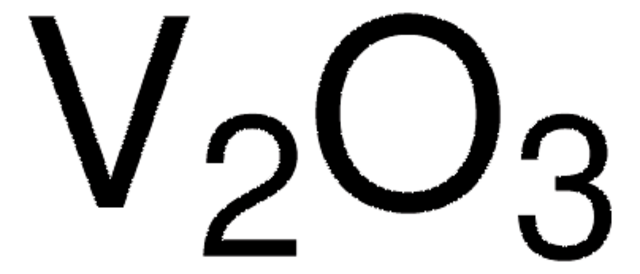481033
Titanium(III) oxide
−100 mesh, 99.9% trace metals basis
Synonym(s):
Dititanium trioxide, Titanium sesquioxide
About This Item
Recommended Products
Quality Level
Assay
99.9% trace metals basis
form
powder
reaction suitability
reagent type: catalyst
core: titanium
particle size
−100 mesh
density
4.49 g/mL at 25 °C (lit.)
SMILES string
O=[Ti]O[Ti]=O
InChI
1S/3O.2Ti
InChI key
GQUJEMVIKWQAEH-UHFFFAOYSA-N
Looking for similar products? Visit Product Comparison Guide
Features and Benefits
Storage Class Code
11 - Combustible Solids
WGK
WGK 3
Flash Point(F)
Not applicable
Flash Point(C)
Not applicable
Choose from one of the most recent versions:
Already Own This Product?
Find documentation for the products that you have recently purchased in the Document Library.
Customers Also Viewed
Articles
Titanium dioxide (TiO2) is an important n-type semiconducting material that shows interesting characteristics such as photoswitchable surface wettability, high photocatalytic activity, bistable electrical resistance states and high electron drift mobility.
The diversity of applications and nanostructured materials accessible using ultrasonic spray methods are highlighted in this article.
In this paper, we discuss recent advances in the preparation of various TiO2 porous structures via hard and soft-templating routes. Specifically, we focus on recent developments in TiO2 mesoporous thin films in a combined sol-gel and evaporation-induced self-assembly (EISA) process.
Ultrasonic spray pyrolysis (USP) is effective for preparing a wide array of materials and is scalable and continuous. Nanomaterials prepared by USP include nanoporous metal oxides and sulfides, nanocomposites, semiconductor quantum dots, and conductive metal inks.
Our team of scientists has experience in all areas of research including Life Science, Material Science, Chemical Synthesis, Chromatography, Analytical and many others.
Contact Technical Service



